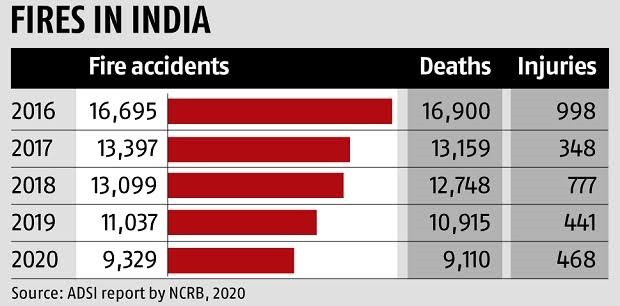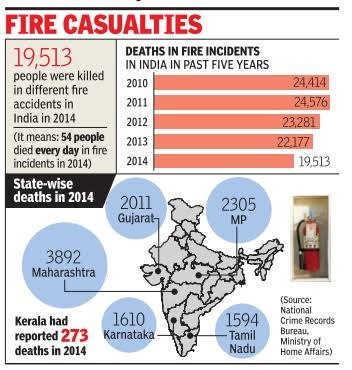Description
Daily Editorial Analysis
Editorial Analysis based on “Fires in Rajkot and Delhi: To get safer cities, we must demand them” which was published in The Hindu.
Introduction:
- Recent fires in Indian cities highlight institutional failures in urban planning and regulation.
- Municipal corporations, civic development authorities, and planning control commissions are under scrutiny for their decisions shaping urban environments.
- Effective planning could have mitigated risks to lives lost in these incidents.


Issues of urban fires in india
Role of By-laws and Building Codes:
- Urban development is governed by by-laws framed under the National Building Code, safeguarding livability, safety, and sustainability.
- However, complexities arise in implementing these laws in rapidly growing cities, leading to strained compliance efforts.
Spatial Relationships and Complexity in compliance:
- Spatial relationships in urban areas are inherently complex, especially in semi-developed regions experiencing rapid densification.
- Compliance with building codes may lead to spatial configurations that are not necessarily meaningful or conducive to safety and well-being.
Loss of Public Spaces and Privatization:
- Privatization of public spaces and encroachment upon intermediate lands reduce opportunities for public activities.
- Commercial developments restrict public access, leading to the loss of open public spaces for recreation and social interaction.
Air Pollution:
- Urban areas in India are facing severe air pollution levels, primarily due to vehicular emissions, industrial activities, and construction projects.
- Example: According to the World Air Quality Report 2023, 9 of the top 10 most polluted cities are in India.
Traffic and Mobility Challenges:
- Rapid urbanization and the influx of private vehicles have led to severe traffic congestion, increasing commute times and hampering productivity.
- Example: In Bengaluru, the average traffic speed during peak hours is estimated to be around 18 km/h, resulting in significant economic losses due to lost productivity and fuel wastage.
Urbanization and Building Edifices of Consumption:
- India's rapid urbanization often prioritizes the construction of consumption-driven structures without adequate consideration for safety and sustainability.
- The focus on short-term quantitative gains neglects long-term qualitative aspects of urban living.
Way ahead:
- Demand for Healthy Urban Environments:
- Stakeholders must prioritize the creation of safe and sustainable urban environments over mere compliance with regulations.
- Urban residents should be aware of the trade-offs between short-term benefits and long-term quality of life.
- Role of Planning Institutions:
- Planning institutions need to periodically assess the quality of built spaces to identify vulnerabilities and maintain urban infrastructure.
- Upholding the dignity of lived spaces and ensuring access to public areas are essential for fostering social and ecological sustainability.
- Collective Responsibility for Urban Safety:
- Ensuring a safe urban space requires collaboration between lawmakers, planners, and city users.
- Meaningful implementation of spatial codes and active participation in urban processes are crucial for achieving a sound urban environment.
- Sponge City Concept and Permeable Urban Landscapes:
- Implementing the "Sponge City" concept, which involves the integration of permeable pavements, green roofs, rainwater gardens, and other water-absorbing features into urban landscapes.
- Encouraging the preservation and restoration of natural water bodies, wetlands, and floodplainsthrough Blue-Green Infrastructure within urban areas to enhance water retention and flood mitigation.
- Incorporating biophilic design principles into urban architecture and infrastructure, bringing nature into the built environment. Singapore's Jewel Changi Airport is a notable example of biophilic design.
Sponge cities:
https://www.iasgyan.in/daily-current-affairs/sponge-cities-1
Smart Cities:
https://www.iasgyan.in/daily-current-affairs/smart-cities
Fire safety in India
https://www.iasgyan.in/ig-uploads/pdf/9394433.pdf






